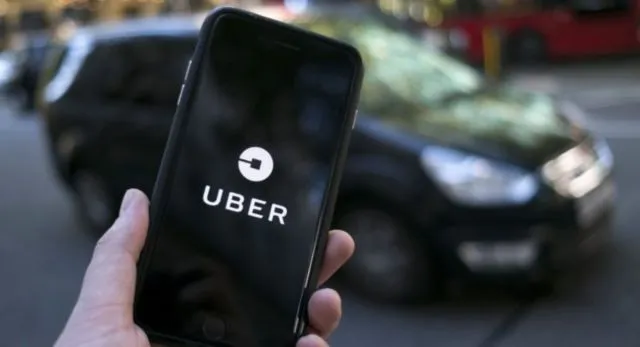Imagine pouring your life savings into a business, only to have the rug pulled out from under you by a corporate giant. This is the reality for one Uber Black driver who invested a staggering $180,000 to kickstart his premium ride-hailing business, only to have Uber deactivate his account without warning. This story isn’t just about one man; it highlights the precarious nature of gig economy jobs and the significant risks involved.
Understanding Uber Black
What is Uber Black?
Uber Black is the premium offering from Uber, promising riders a high-end experience with luxury vehicles and top-rated drivers. It’s a significant step up from the regular UberX service, catering to customers willing to pay more for comfort and style.
Differences between Uber Black and Regular Uber Services
Unlike the standard Uber services, Uber Black requires drivers to own or lease a luxury vehicle that meets specific criteria. The service aims to deliver a superior experience, which justifies the higher fare prices. Drivers must also maintain higher ratings and provide additional amenities, such as bottled water and premium customer service.
The Investment Journey
Initial Inspiration to Start an Uber Black Business
The driver, let’s call him John, saw an opportunity to capitalize on the demand for luxury transportation. With a background in customer service and a passion for high-end vehicles, he believed Uber Black was his ticket to financial independence and success.
Detailed Breakdown of the $180,000 Investment
John’s investment was significant, and it covered various aspects crucial to establishing his Uber Black business:
- Purchasing a Luxury Vehicle: John bought a top-of-the-line vehicle that met Uber’s stringent requirements. This alone cost over $100,000.
- Insurance and Licensing Costs: Ensuring the car was adequately insured and obtaining the necessary licenses added up to another $20,000.
- Marketing and Branding Efforts: John spent around $10,000 on marketing to establish a brand that attracted high-end clientele.
- Additional Expenses: Miscellaneous expenses, including maintenance, fuel, and personal branding, rounded up the total investment to $180,000.
The Role of Uber in the Business Model
Uber’s Support and Requirements for Uber Black Drivers
Uber provided a platform and support for drivers like John to offer premium services. However, it came with stringent requirements, including maintaining high ratings, adhering to strict vehicle standards, and ensuring exceptional customer service.
Expectations from Uber
John expected Uber to be a reliable partner, providing steady business and supporting drivers who invested heavily in meeting their standards. The deactivation of his account was a severe blow to these expectations.
The Deactivation Incident

Timeline Leading to the Deactivation
John’s account was deactivated abruptly, following several years of dedicated service. There were no prior warnings or indications that his performance was subpar.
Reason Provided by Uber for the Deactivation
Uber cited vague policy violations as the reason for the deactivation, leaving John in the dark about what he did wrong.
Immediate Impact on the Driver
The deactivation was a devastating blow. Overnight, John lost his primary source of income and was left with substantial debt from his investment.
Financial Implications
Losses Incurred Due to Deactivation
John’s financial losses were significant. The luxury vehicle he purchased depreciated rapidly, and he was still responsible for loan payments, insurance, and other ongoing expenses.
Ongoing Expenses Despite Deactivation
Despite the deactivation, John had to continue paying for insurance, vehicle maintenance, and other costs associated with owning a luxury vehicle.
Attempted Recourse and Financial Recovery
John attempted to appeal the deactivation through Uber’s internal processes and even sought legal advice. However, the recourse options were limited and time-consuming.
Psychological and Emotional Impact
Stress and Anxiety Faced by the Driver
The sudden loss of income and uncertainty about the future took a toll on John’s mental health. He experienced significant stress and anxiety, worrying about his financial stability and future prospects.
Family and Social Repercussions
John’s family also felt the impact, as the financial strain affected their lifestyle and plans. Socially, the abrupt end to his business ventures affected his confidence and reputation.
Legal and Ethical Considerations
Terms and Conditions of Uber for Drivers
Uber’s terms and conditions give the company broad discretion to deactivate accounts, often without providing detailed explanations or opportunities for drivers to contest the decision.
Potential Legal Actions Against Uber
John explored the possibility of legal action against Uber. However, the company’s terms and conditions, which drivers agree to upon signing up, make it challenging to hold Uber accountable in court.
Ethical Questions Surrounding Gig Economy Practices
The incident raises ethical questions about the treatment of gig workers and the responsibility of companies like Uber to support their partners. Is it fair to deactivate an account without a clear reason, especially when significant investments are involved?
Community and Peer Reactions
Support from Other Uber Drivers
John received support from fellow Uber drivers who shared similar experiences and frustrations. This community support was crucial in helping him navigate the challenging situation.
Reactions from the Wider Gig Economy Community
The broader gig economy community expressed outrage and concern over John’s plight. His story became a cautionary tale for others considering significant investments in gig economy platforms.
Public Opinion on Social Media and Forums
John’s story gained traction on social media and forums, sparking discussions about the vulnerabilities of gig economy workers and the need for better protections and transparency.
Uber’s Official Response
Statements from Uber
Uber released a statement reiterating their commitment to maintaining high standards and ensuring customer safety. They did not provide specific details about John’s deactivation but emphasized their policies and procedures.
Analysis of Uber’s Deactivation Policy
Uber’s deactivation policy is often criticized for its lack of transparency and consistency. The broad discretion given to Uber allows for arbitrary decisions that can have severe consequences for drivers.
Comparison with Other Gig Economy Platforms
Other gig economy platforms, like Lyft and DoorDash, also have similar deactivation policies. However, some offer more transparent processes and better support for their workers.
ALSO READ:
Lessons Learned
Risks of Investing in Gig Economy Businesses
John’s experience highlights the risks associated with investing heavily in gig economy businesses. These platforms can change their policies or deactivate accounts at any time, leaving workers vulnerable.
Importance of Diversification and Backup Plans
Diversifying income sources and having a backup plan is crucial for anyone relying on gig economy platforms. This can help mitigate the impact of sudden changes or deactivations.
Understanding Platform Dependency
Gig workers need to understand their dependency on the platform and take proactive steps to reduce their vulnerability. This includes building


